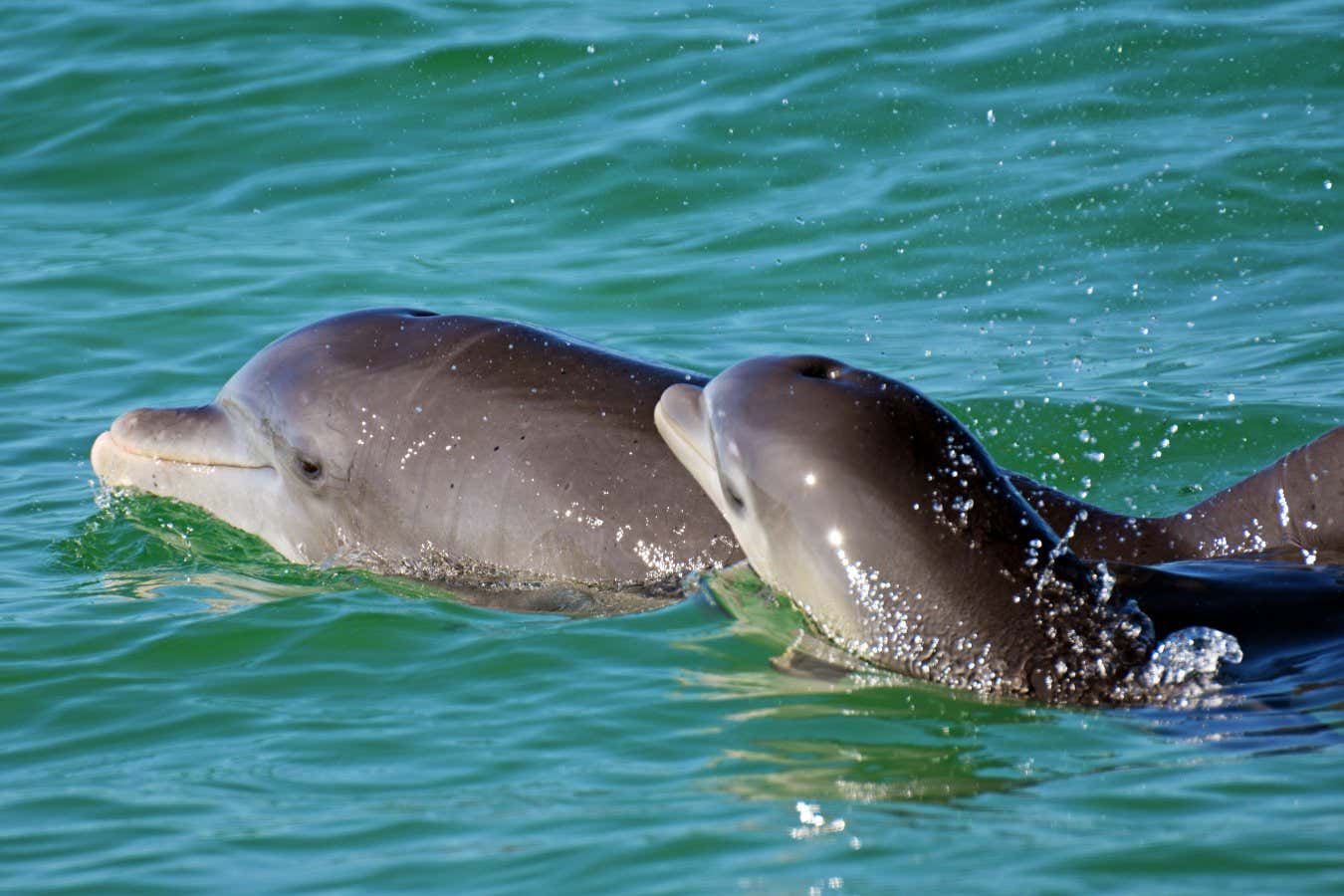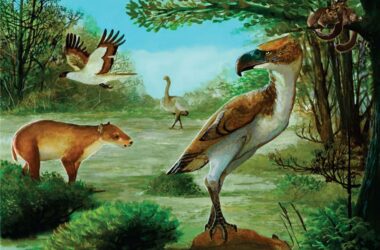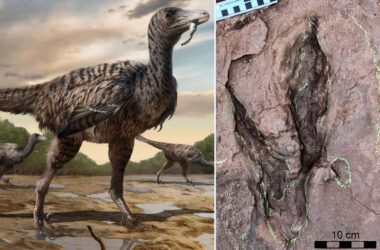A new study has found that female bottlenose dolphins use high-pitched vocalizations when communicating with their calves, similar to how humans use “baby talk” when interacting with babies. This behavior may help strengthen the bond between dolphin mothers and their offspring and facilitate learning in dolphin calves.
When humans interact with babies, they often speak in a high-pitched and melodious manner, referred to as “baby talk” or “parentese.” This modified speech pattern is observed in various cultures around the world.
Researchers have also uncovered evidence suggesting that certain animals, such as zebra finches, gorillas, and monkeys, have specific ways of communicating with their young.
Bottlenose dolphins are known to produce a unique whistle, referred to as their signature whistle, which is distinct for each individual dolphin.
Scientists, led by Laela Sayigh from the Woods Hole Oceanographic Institution, conducted a study to investigate whether the signature whistles of female bottlenose dolphins change when communicating with their offspring. They analyzed the whistles of 19 adult female dolphins in Florida’s Sarasota Bay over a span of 34 years, during both interactions with and without their calves.
The researchers discovered that when dolphins were with their offspring, they produced whistles at a higher frequency and a wider range of frequencies compared to other times. The modified whistle still maintained the individual identity of the dolphin but exhibited a subtle shift in the highest frequency, similar to pitch changes observed in humans.
Although the exact purpose of these modified vocalizations in dolphins is still unknown, the researchers suggest they may play a role in promoting vocal learning in young dolphins, similar to how “baby talk” facilitates language acquisition in humans.
Studying how animals communicate with their young can provide insights into the evolutionary history of vocal learning in animals and the development of language in humans. Understanding the communication strategies of different species is essential for gaining a broader understanding of the natural world.
Further research could explore whether dolphins also modify their whistles when interacting with the babies of other dolphins, a behavior observed in humans. Julie Oswald from the University of St Andrews is particularly interested in investigating this aspect.








